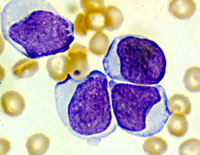How do bone and cartilage tumors manifest? What methods of treatment are used in the treatment of bone and cartilage tumors? What is the methods of treatment of bone and cartilage tumors? Read in this article.
Content
Signs and symptoms of bone and cartilage tumors
 Bone pain – The most common symptom of bone and cartilage tumors. At first, the pain is not constant and worried more at night or when walking in case of lesion of the lower limb. As the tumor grows, the pain becomes constant.
Bone pain – The most common symptom of bone and cartilage tumors. At first, the pain is not constant and worried more at night or when walking in case of lesion of the lower limb. As the tumor grows, the pain becomes constant.
Pain is intensified when moving and can lead to a chromote in the presence of a tumor of the lower limb.
Punching in pain may appear in a few weeks. Sometimes the tumor can be forgiven with hands.
Fractures It is rare and may occur both in the region of the tumor itself and in close proximity to it.
Common symptoms occur with the common process and are expressed in the form of weight loss and increased fatigue.
Methods for diagnosing bone and cartilage tumors
Standard X-ray In most cases, it allows you to detect the bone tumor, which may look like a cavity or additional sprouting of bone tissue.
Computed tomography (CT) (Sometimes with the additional introduction of a contrast agent) makes it possible to reveal the tumors of the shoulder belt, the bones of the pelvis and the spine.
Magnetic resonance Tomography (MRI) Especially advisable when defeating the spine and spinal cord.
Radioisotope scanning bones Using technetium, it allows you to detect both the degree of local proliferation of the tumor and the defeat of other bones. This method is more effective compared to standard Kosti X-ray.
Biopsy (Taking a piece of tumor for research) is mandatory, as it gives the right to confirm or eliminate tumor bone or cartilage tissue. In this case, the biopsy can be performed by a needle or during operation.
After a detailed survey specifies the stage of the disease. Depending on the prevalence of the process, stages can be established - from i to iv.
In addition, the study under the microscope allows us to find out the degree of malignancy of the tumor.
Operational treatment of bone and cartilage tumors
Operation is the most important method of treating bone and cartilage tumors. The purpose of surgical intervention – Removal of the whole tumor within healthy tissues. In the event of a tumor in the field of pelvis, operational intervention may be difficult due to the number of vital organs. If another 10 years ago, the emergence of a malignant tumor at the limb led to the loss of an affected limb, then a tendency to preserve the limb is currently observed.
Part of the affected bone can be removed with the subsequent substitution of the defect with another bone or metal prosthesis to save the limb function. With significant tumor sizes, chemotherapy or radiation therapy is first carried out, and then after reducing the sizes of the tumor, a saved operation is performed. Amputation (removal of the limb) are performed infrequently. In the postoperative period, the patient make prosthesis. In the case of metastatic loss of lungs, there are sometimes operations to remove tumor nodes.
Radiation therapy of bone and cartilage tumors
There are two types of radiation therapy in the treatment of bone and cartilage tumors: external irradiation and brachytherapy. With external irradiation, the source is outside the body.
Rays focus on the tumor region. Brachytherapy implies the use of radioactive material introduced directly to the tumor. This type of irradiation can be used both separately and in combination with external irradiation.
In some patients, especially with a bad general condition, radiation therapy may be the main method of treatment. In patients with sarcoma, Yinga, radiation therapy is the main method of treatment. After neravical operation, radiation therapy is assigned to destroy the remaining part of the tumor. Irradiation can be used with a palliative purpose to reduce the symptoms of the tumor, for example, pain.
When conducting radiation therapy, the appearance of side effects in the form of changes in skin and increased fatigue. These phenomena pass on their own soon after the end of treatment. Under the irradiation of the pelvis area, the appearance of nausea, vomiting and liquid chair.
Radiation therapy conducted on the chest area is able to cause lung damage, which in turn can lead to shortness of breath.
Exposure in the field of upper and lower extremities in some cases is accompanied by edema, pain and weakness. Radiation therapy may aggravate side effects caused by chemotherapy.
Chemotherapy of bone and cartilage tumors
Depending on the type of tumor and stage, chemotherapy can be used as the main or auxiliary (to operation) treatment.
 In this case, a combination of antitumor drugs is applied. The most active drugs with these tumors are: methotrexate (high doses in combination with leacovesorin), doxorubicin and cisplatin.
In this case, a combination of antitumor drugs is applied. The most active drugs with these tumors are: methotrexate (high doses in combination with leacovesorin), doxorubicin and cisplatin.
In some cases, chemotherapy is appointed before the operation in order to reduce the size of the tumor, in others - immediately after surgery to destroy the remaining tumor cells.
In patients with extensive distribution (metastasis) of tumors, other antitumor drugs can be applied: vincristine, etoposide, dactinicin, and phosphamide.
Chemotherapy, destroying tumor cells, also damages normal cells, causing side effects and complications. The severity of side effects depends on the type of preparation, total dose and duration of use.
From temporary side effects, it is possible to note: nausea, vomiting, loss of appetite, baldness, appearance of ulcers in the mouth. Reducing the number of erythrocytes, leukocytes and blood platelets as a result of bone marrow damage can cause anemia (anemia), increased susceptibility to infection, bleeding.
After completing the entire treatment program for bone and cartilage tumors
After the cessation of antitumor treatment, the patient must be under the supervision of doctors who can assign various studies.
The patient, for its part, can help the fastest recovery after the operation and additional treatment, observing a reasonable lifestyle.
- If you smoke, then throw this bad habit. Failure to smoking will improve your well-being and appetite.
- If you abused alcohol, then reduce its quantity or give up alcoholic.
- Use enough vegetables and fruits. Rest as much as possible.
Observation of doctors makes it possible to reveal the recurrence (refund) of the tumor or metastase, which allows in many cases to carry out effective re-treatment









